Exchanging knowledge is one of the moving forces of progress and it is the same when the topic is lynx conservation. In the middle of October, LIFE projects working with large carnivores from Slovenia and Italy (LIFE Lynx and LIFE WolfAlps EU) visited Andalusia. The purpose of the visit was meeting with one of the most successful lynx reinforcement projects in Europe – LIFE Iberlince projects that have already finished, and the ongoing LIFE LynxConnect project that is trying to create stepping-stones areas to connect the separated Iberian lynx populations.
Participants of the excursion were welcomed at the Central Offices of the Regional Ministry for agriculture in Seville (Consejería de Agricultura, Ganadería, Pesca y Desarrollo Sostenible), where Marcos López-Parra from “AMAYA” (Agencia de Medio Ambiente y Agua de Andalucía) gave an educative overview of the situation of the Iberian Lynx in Spain and Portugal by referring to previous and current conservation projects.
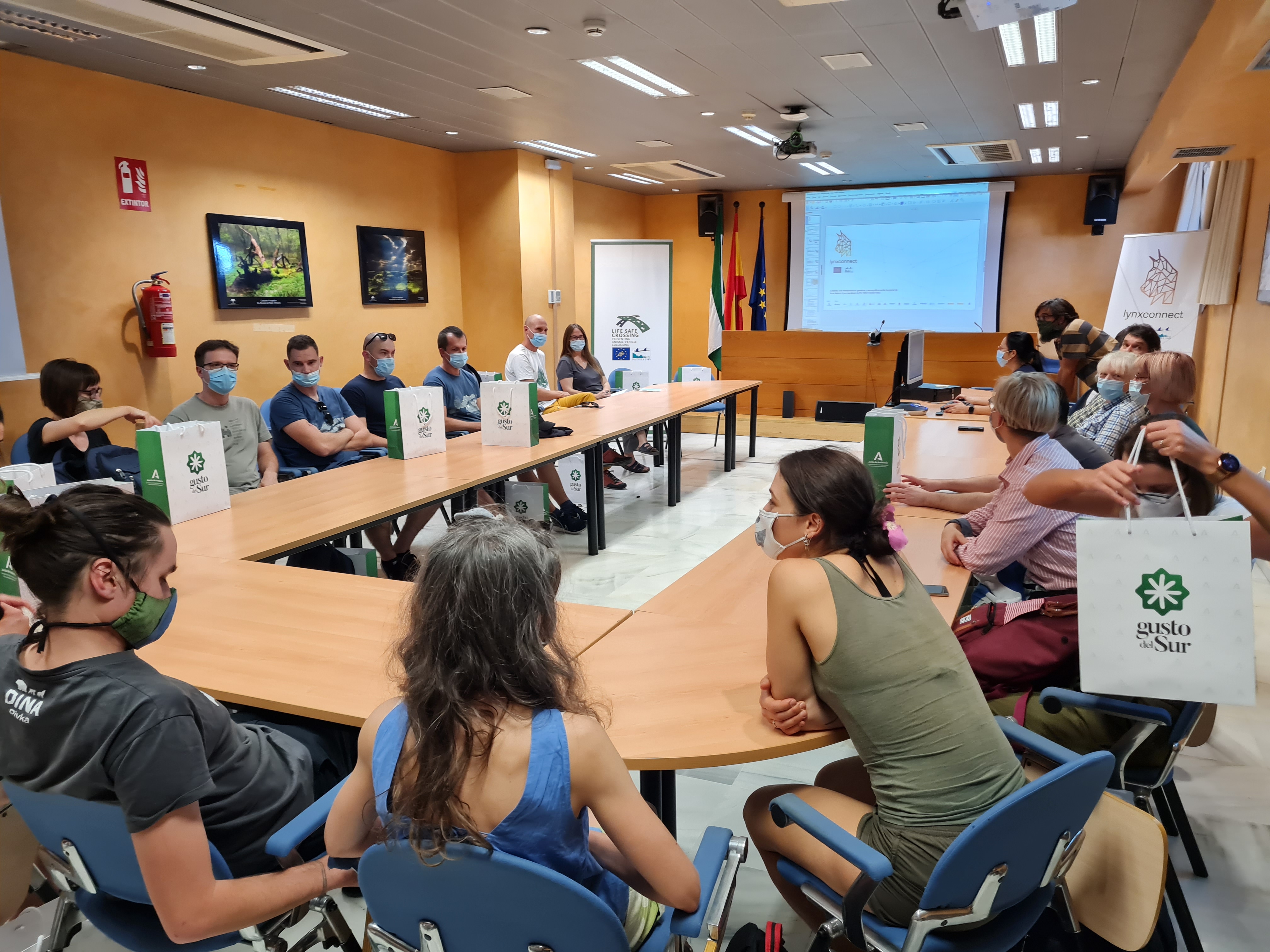
Participants of the excursion at the Central Offices of the Regional Ministry for agriculture in Seville. Photo: LIFE Lynx
First stop of the excursion was Doñana National Park, which is one of the most important areas, for the Iberian lynx projects. It is mostly know for it’s floodplains, and high diversity of bird species, but it is also one of the two areas, where the Iberian lynx managed to survive until the reinforcement projects started. Here, surrounded by the landscape of stone pines, Marcos López-Parra gave a talk about the lynx population in Doñana and the connection with other populations. Nearly a 100 lynx inhabit Doñana today, with about 25 breeding females, but twenty years ago, there were only 8 breeding females left. This fact alone tells us how successful the Iberian lynx projects are. However, there were some “hiccups” on the way; in 2007 there was a feline leukaemia outbreak, infecting the Iberian lynx population rapidly. Fortunately, the outbreak was controlled by removing infected lynxes and vaccinating the healthy ones.
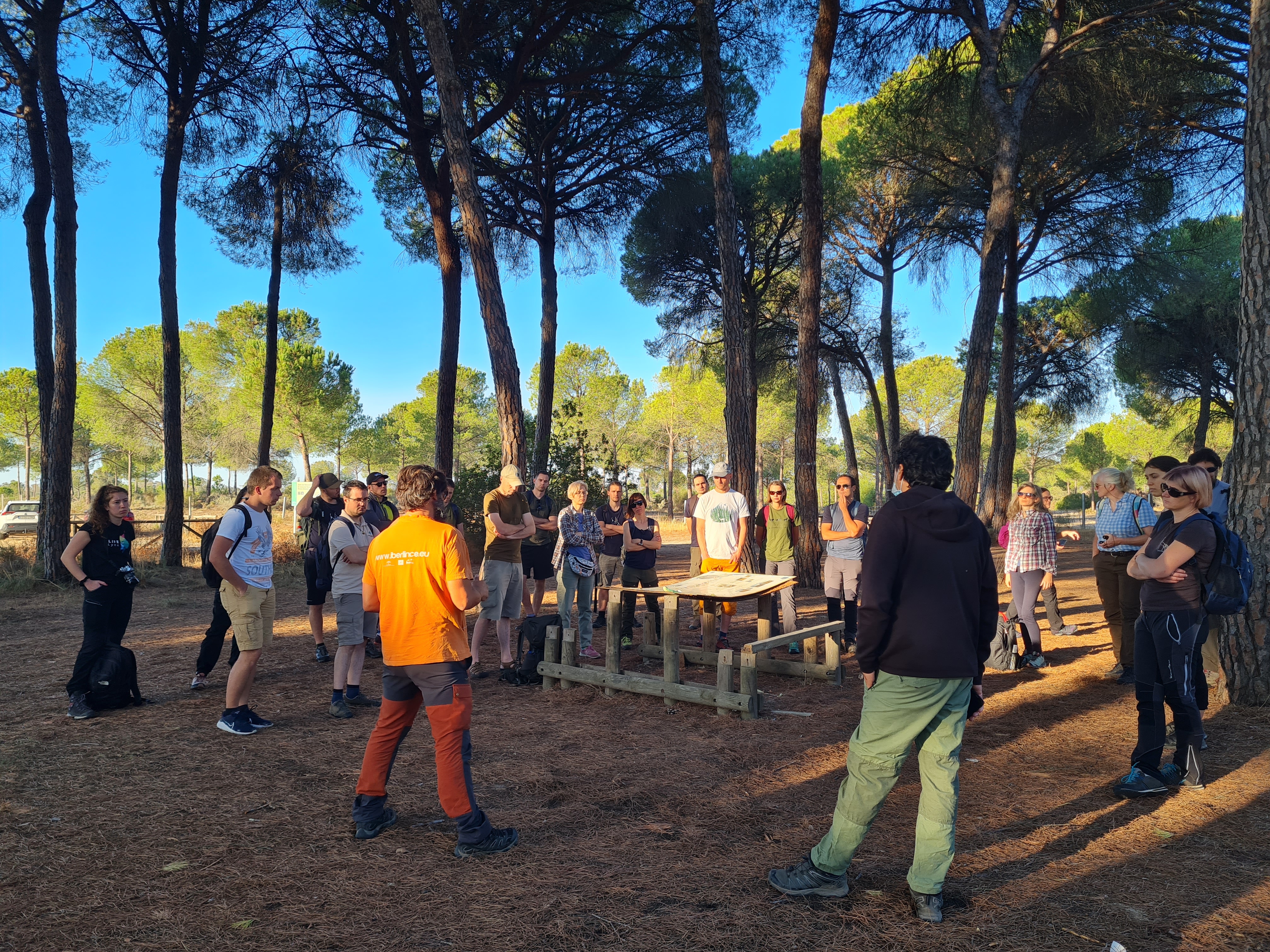
In Doñana National Park where the dominant tree species is stone pine (Pinus pinea). Photo: LIFE Lynx
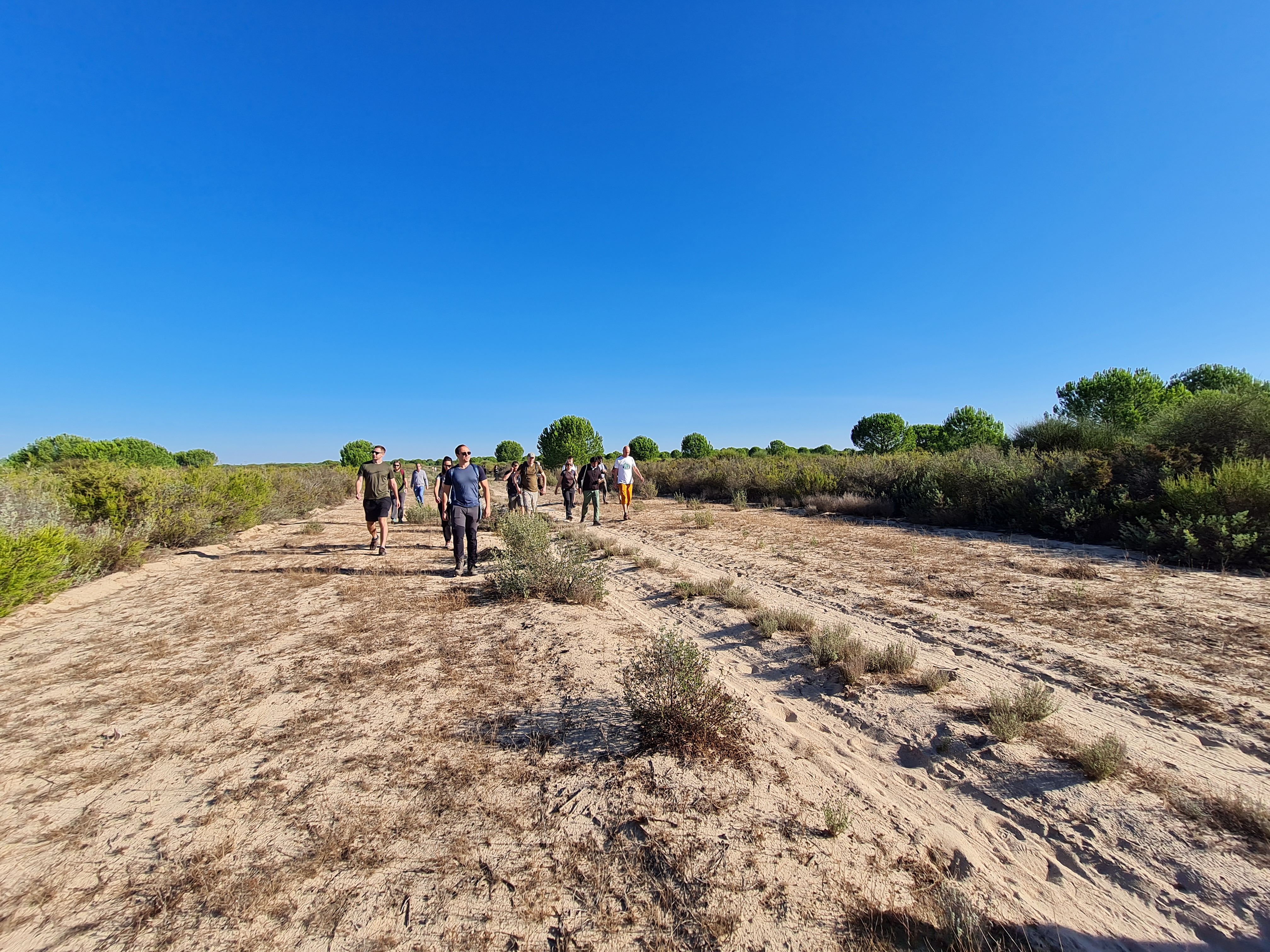
A short walk in Doñana National Park. Photo: LIFE Lynx
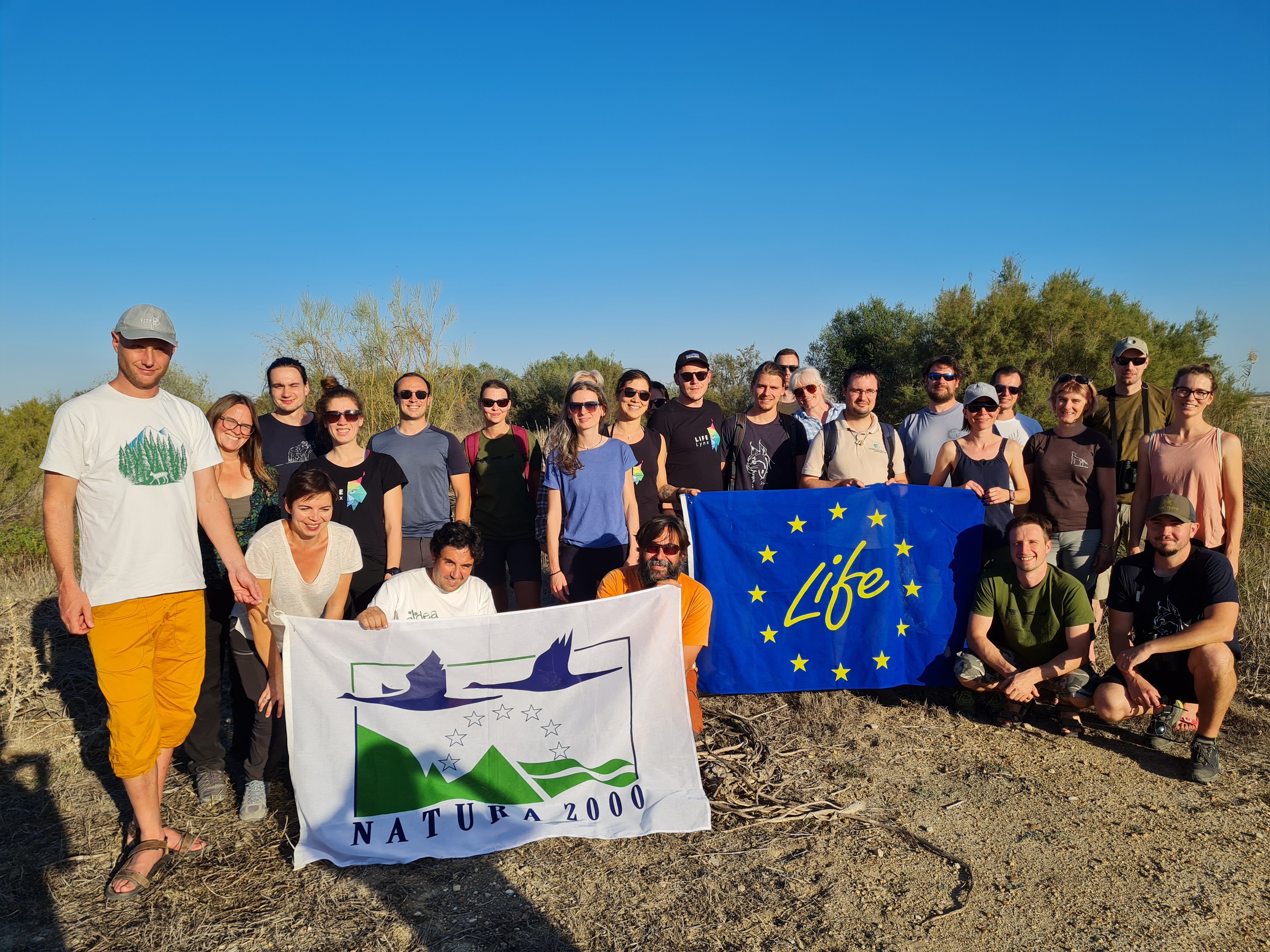
Group photo. Photo: LIFE Lynx
There are five lynx breeding centers in Spain and Portugal and the participants of the exccursion visited two of them. The first one was “El Acebuche”, which was built next to the Wildlife Recovery Center of the Doñana National Park. The second one was ‘’La Olivilla” in Sierra Morena, which is the biggest one and has 23 enclosures. Here the team learned more about the work in a breeding centre, and how they train the cubs for the release into nature. The team was surprised to find out that Iberian lynxes’ cubs – “little devils of one kilo” have quite harsh fights between littermates and that their mother instinct knows how to separate the feistiest ones.
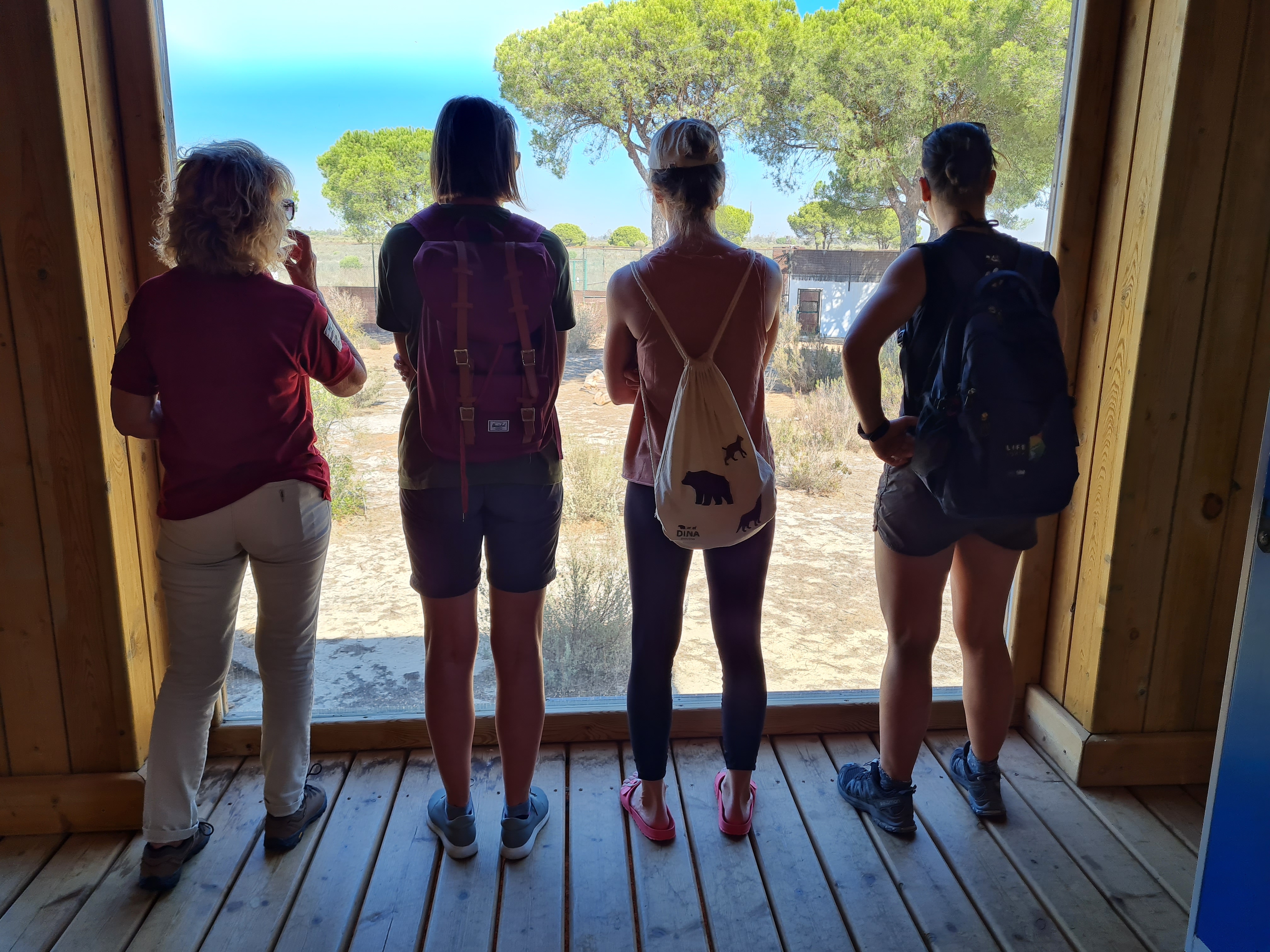
Lynx observatory in Wildlife Recovery Center of the Doñana National Park. Photo: LIFE Lynx
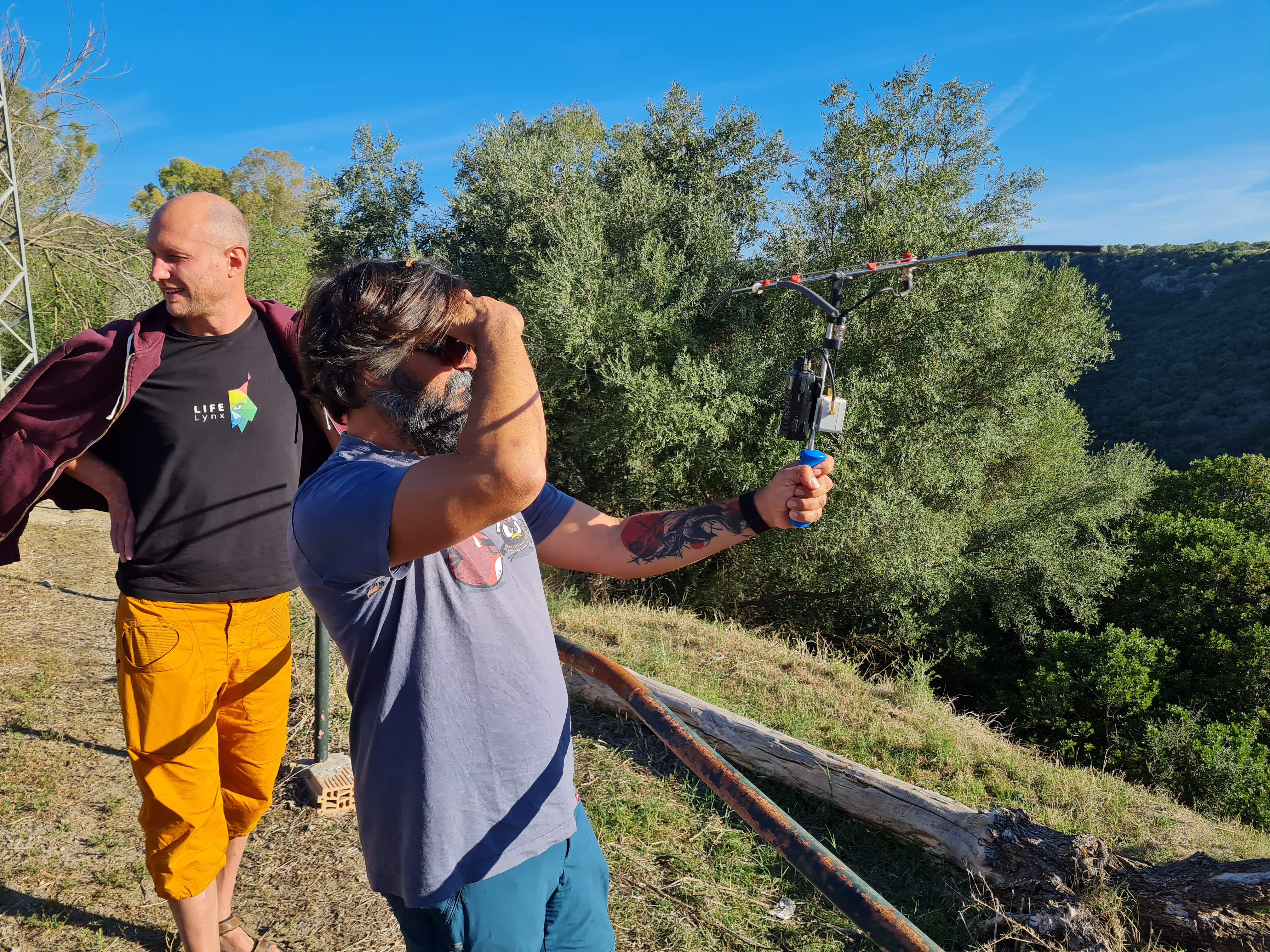
Searching for a signal from a lynx telemetry collar. Photo: LIFE Lynx
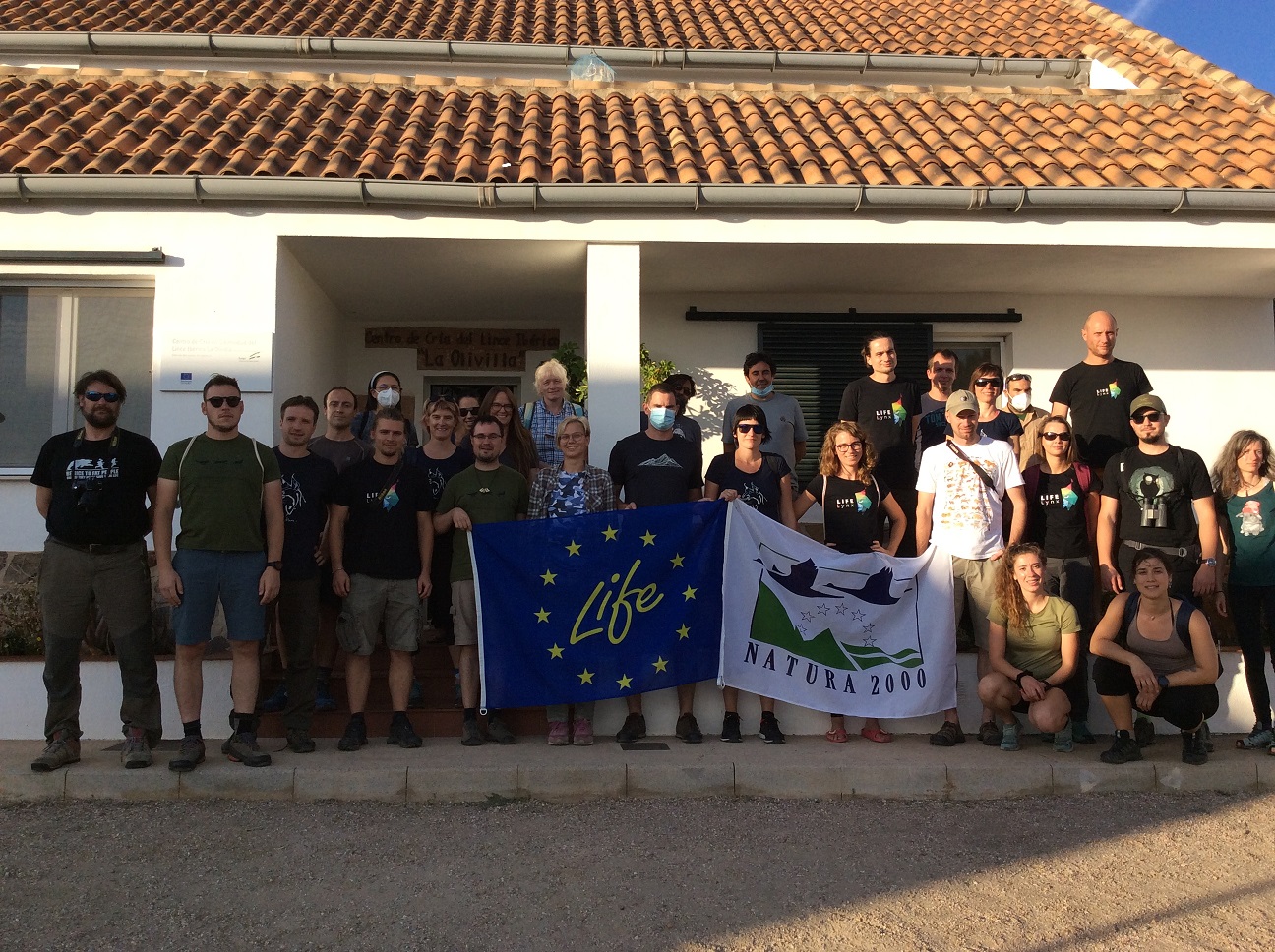
Group photo in front of the La Olivilla lynx-breeding centre. Photo: Maria Navarro, LIFE LynxConnect
The LIFE teams learned a lot during the visit from each other’s projects, shared experiences, exchanged knowledge on project management, an on how to approach different stakeholders, when the topic is delicate as large carnivores often are.
